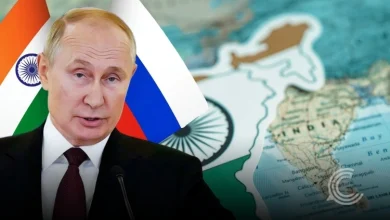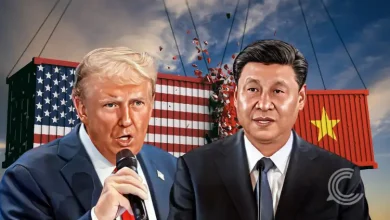Mega-strike in New Zealand: 100K Demand Better Pay/Conditions

Key Highlights:
- Over 100,000 public-sector workers across New Zealand participated in a massive strike, demanding higher pay and improved working conditions.
- The New Zealand mega strike is the largest in decades, reflecting deep frustration with the government’s cost-cutting policies.
- Schools and hospitals faced major disruptions as unions warned of worsening staff shortages and service breakdowns.
More than 100,000 teachers, nurses, doctors, firefighters, and support staff walked off the job on Thursday as part of the dramatic New Zealand mega strike, demanding higher pay and better resources for the public sector. This mass walk-out signals deepening frustration with the government’s cost-of-living strategy and service cuts under the centre-right coalition.
Mass Mobilisation Across Cities
Public servants carried placards and marched en masse in towns and cities across New Zealand, chanting, listening to speeches, and confronting a stark reality of strained public services. Rallies in some areas, such as Wellington and Christchurch, were cancelled because of dangerous weather conditions, yet the energy behind the New Zealand mega strike remained unmistakable.
In Auckland’s Aotea Square, thousands gathered and marched down Queen Street with banners and slogans calling for investment and respect, as reported by Reuters. Meanwhile, in smaller centres, teachers, nurses, and support staff voiced concerns about understaffing, burnout, and pay that fails to keep up with inflation.
What Are They Demanding?
The unions behind the action billed this as the largest industrial action in decades: the New Zealand mega strike involving public-sector workers from health, education, and support services. Among the demands: A meaningful pay rise that keeps pace with inflation and cost-of-living pressures. Improved staffing levels in hospitals and schools to relieve chronic workloads and safety concerns. Renewed investment in public services rather than back-office cuts, so that frontline professionals feel valued and supported.
Also Read | A $100,000 Price Tag on Ambition; Why Trump’s H-1B Fee Missed the Point
One speaker, Dr Sylvia Boys of the Association of Salaried Medical Specialists (ASMS), told the crowd that the government had been elected on promises to reduce the cost of living while bolstering services and that “it is fair to say these are the issues on which they are failing dismally”.
Similarly, teachers reported that many colleagues are leaving the profession and, in some cases, the country because they feel undervalued and unsupported, according to reports by The Guardian.
Government Response and Political Fallout
The government has dismissed the walk-out as a union-orchestrated political stunt. Public Service Minister Judith Collins described the strike as “unfair, unproductive and unnecessary,” arguing the real sufferers are the thousands of patients whose operations were delayed and the hundreds of thousands of children missing another day of school.
Since the coalition government took office in 2023, it has sought to reduce new public spending, target back-office functions, keep interest rates low, and maintain New Zealand’s investment appeal. However, as the economy struggles, contracting in three of the last five quarters, and a rising number of New Zealanders leave the country, the public sector workforce says the strategy has come at too steep a cost.
Disruption and Wider Impact
The scale of the New Zealand mega strike means disruption across the board. Schools were closed in many areas, and non-essential hospital procedures were delayed. The education system, already grappling with staff shortages and overworked teachers, now sees the strike as a turning point. Health workers warn of “catastrophic failure” if conditions do not improve.
Weather also played a role: wild winds and red-level warnings forced cancellation of planned outdoor rallies in some regions, but did not stop the core walk-out from proceeding.
What Happens Next?
Union leaders are clear that the strike is just a step. If their demands aren’t meaningfully addressed, further action is likely. Meanwhile, the government says it remains willing to negotiate, even as ministers continue to frame the walk-out in political terms. Whether a compromise will be reached remains to be seen.
For many workers on the ground, the key question is: will this moment produce lasting change, or simply a temporary pause in a larger crisis? The New Zealand mega strike has made the issue impossible to ignore; now it falls to both sides to decide the cost of inaction.



